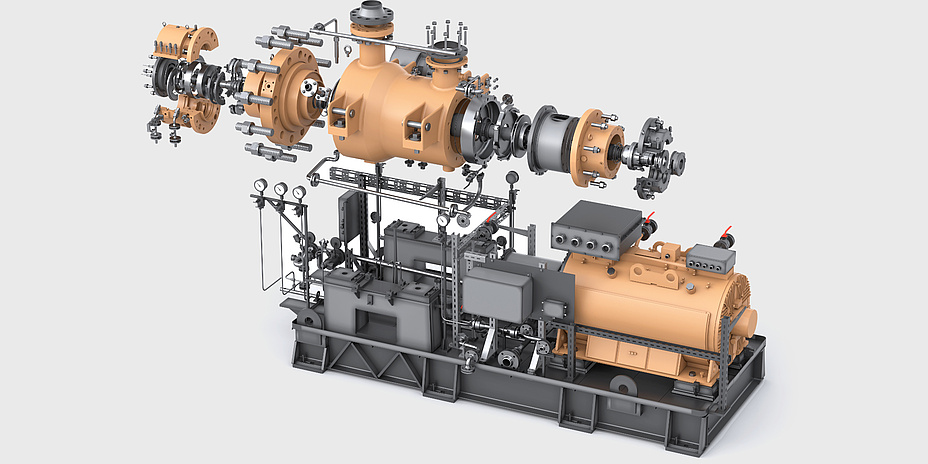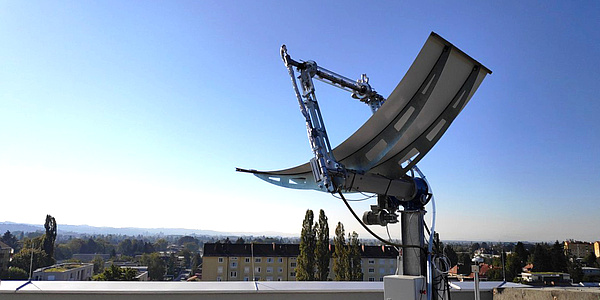Only One Megawatt is Powerful Enough

When you think of electric motors, the first thing that probably comes to mind, apart from electric cars, are small drive units, for example for fans, fridges or toys. When it comes to large motors, trains are probably the most obvious choice for electric drives. However, there are large electric motors in many other areas of application; they all have the advantage over combustion engines that they deliver power over a relatively wide speed/torque range with relatively high efficiency, without the need for a gearbox. But this raises a question. Could they not be used much more widely to reduce CO2 emissions? For example, a huge container ship with electric propulsion instead of marine diesel would be a tempting idea. But such a ship would not be suitable for the high seas due to the huge power storage currently required for this. When it comes to inland waterway transport and short-distance ferries the situation is different, though.
But let’s start from the beginning. When does an electric motor become a large motor, what requirements must it fulfil, how does it differ from a small motor and what can it be used for? Annette Mütze and Michael Hartman from the Electric Drives and Power Electronic Systems Institute at TU Graz can provide answers to these questions.
Power in the megawatt range
“Large is of course relative,” explains Annette Mütze, who would use the term large motor for electric motors with an output of several megawatts. Michael Hartmann takes a similar view, although he adds that the pure power output should also be considered in relative terms. “The power of a motor depends on the rotational speed and torque of the motor. I would consider large motors to be those in the megawatt plus range. But that is of course a very subjective way of looking at it. There are many small motors with an output of a few watts, and for them a kilowatt is already a large motor,” he says with a smile.
As far as the physical size is concerned, the torque is the decisive factor that determines the size of the electric motor. However, the power is also important, as the higher the power, the higher the voltage and/or current, which must be appropriately insulated or routed with corresponding copper cross-sections. If the motor becomes larger, this also changes the mechanical requirements since much larger masses are moved here.
At some point, limits are reached
However, this means that the motors cannot grow infinitely. “Above a certain size, electrical and/or mechanical limits are reached, and it makes more sense for a given application to use several motors than to work on pushing these limits,” says Annette Mütze, adding that the largest electrical machines are not used as motors, but as generators that convert mechanical energy into electrical energy. Besides that, the infinite growth of electric motors is limited by the demands placed on the control system by the power electronics. These increase with the power output of a motor. Michael Hartmann: “In reality, unavoidable deviations in the control of large motors quickly generate quite high, unwanted currents in the motors due to the low impedances. Large motors in particular therefore require good motor voltage regulation, as otherwise all kinds of undesirable effects can occur.”
Regardless of these limits, a lot is happening in the field of electric motors. New cooling and manufacturing technologies and improved materials have increased the power and energy densities enormously. And this progress continues. Due to new and changing fields of application, further improvements are necessary and are currently under development. “Particularly with regard to fast, reliable design techniques, further increases in power and energy density, modularisation with the aim of increasing flexibility and thus optimisation for various applications, as well as more in-depth and systematic consideration of life cycle costs,” emphasises Annette Mütze.
Save money through further development
A suitable example of this are pumps in pumped storage power stations, which have to move a lot of water, but ideally require as little energy as possible to make this type of electricity storage more efficient. Inverter-based, variable-speed operation has been becoming increasingly popular here, even for large machines, making further optimisation possible. Apart from this, large electric motors are also used in numerous critical areas where they need to be flexible and run with high efficiency. For example, in tunnelling machines or for cooling nuclear power plants. Last but not least, it is in industry where electric drives are widely used, for which better power and energy densities or lower life cycle costs promise a number of advantages – not least on the cost side.
Industrial applications include extruders in the petrochemical industry, mine ventilation systems in mining, mill drives, conveyor drives, compressors, pumps for industrial and waste water, shredders for wood and steel, motors for cranes and hoists or rubber kneading machines. The better the efficiency and the smaller the size, while still providing the required power, the more the operators benefit. And if not only motor technology but also storage technology continues to develop, it may one day be possible to send container ships on long journeys using electric propulsion.
The perfect electric motor
The question remains as to what the experts think the perfect large electric motor would look like. Annette Mütze picks up the thread: “Lossless, without noise development or other parasitic effects, naturally built very small – even if the motor would then perhaps no longer be described as large – and impressive in engineering terms, not because of the amount of material used in it, but because of the extreme precision with which it is manufactured.” Michael Hartmann wishes additionally that the power electronics could be integrated directly into large motors, which would avoid unpleasant effects between the two elements, such as overvoltage at the motor terminals when using a long cable. “This occurs particularly quickly due to modern power semiconductors and could be largely avoided by integrating the inverter and the motor.”
This research is anchored in the Fields of Expertise Mobility & Production and Sustainable Systems, two of five strategic focus areas of TU Graz.
You can find more research news on Planet research. Monthly updates from the world of science at Graz University of Technology are available via the research newsletter TU Graz research monthly.
Kontakt
Annette MÜTZE
Univ.-Prof. Dr.-Ing.
TU Graz | Institute of Electric Drives and Power Electronic Systems
Phone: +43 316 873 7240
muetze@tugraz.at
Michael HARTMANN
Univ.-Prof. Dipl.-Ing. Dr.sc.ETH
TU Graz | Institute of Electric Drives and Power Electronic Systems
Phone: +43 316 873 8604
michael.hartmann@tugraz.at



